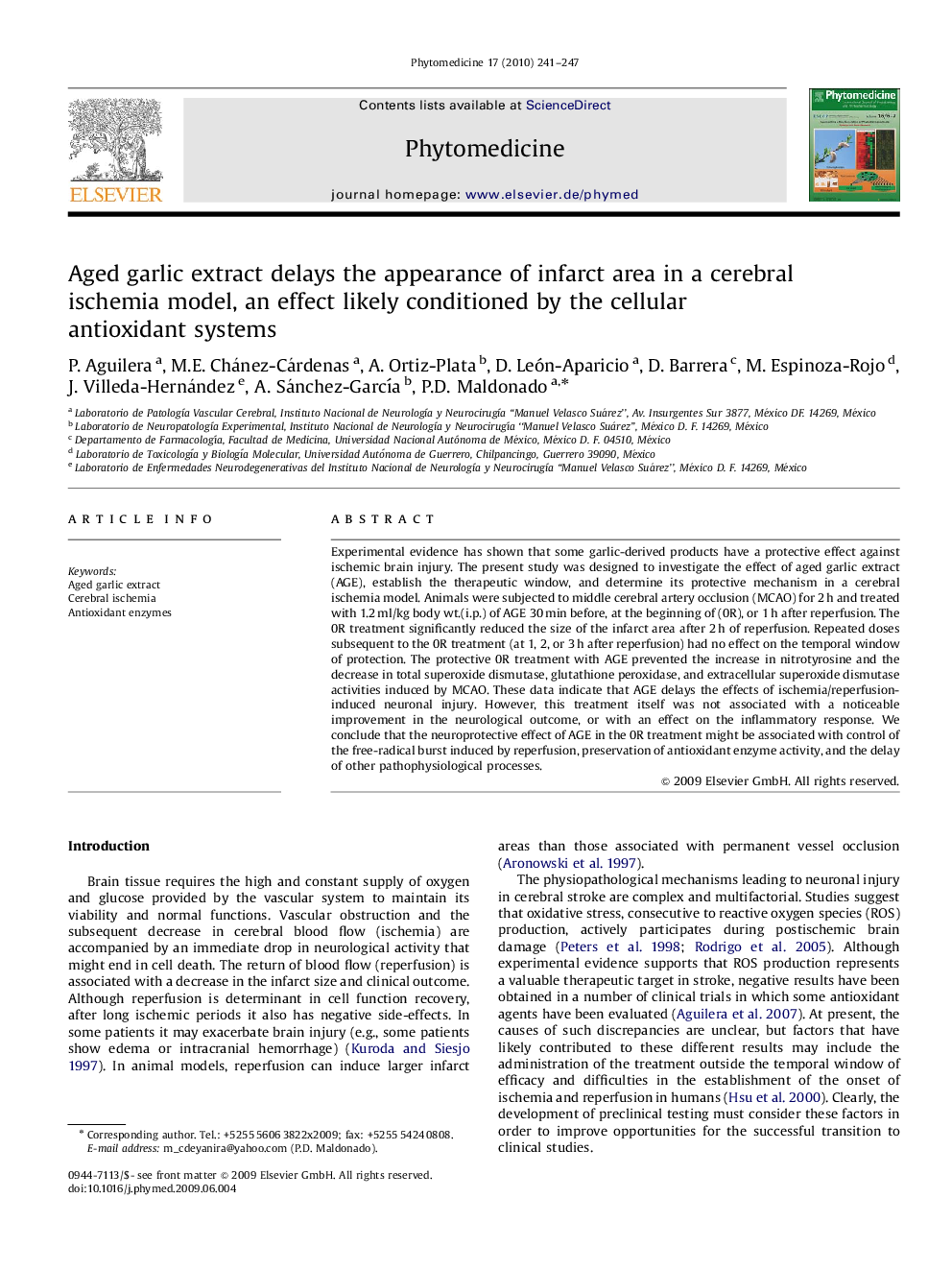| Article ID | Journal | Published Year | Pages | File Type |
|---|---|---|---|---|
| 2497113 | Phytomedicine | 2010 | 7 Pages |
Experimental evidence has shown that some garlic-derived products have a protective effect against ischemic brain injury. The present study was designed to investigate the effect of aged garlic extract (AGE), establish the therapeutic window, and determine its protective mechanism in a cerebral ischemia model. Animals were subjected to middle cerebral artery occlusion (MCAO) for 2 h and treated with 1.2 ml/kg body wt.(i.p.) of AGE 30 min before, at the beginning of (0R), or 1 h after reperfusion. The 0R treatment significantly reduced the size of the infarct area after 2 h of reperfusion. Repeated doses subsequent to the 0R treatment (at 1, 2, or 3 h after reperfusion) had no effect on the temporal window of protection. The protective 0R treatment with AGE prevented the increase in nitrotyrosine and the decrease in total superoxide dismutase, glutathione peroxidase, and extracellular superoxide dismutase activities induced by MCAO. These data indicate that AGE delays the effects of ischemia/reperfusion-induced neuronal injury. However, this treatment itself was not associated with a noticeable improvement in the neurological outcome, or with an effect on the inflammatory response. We conclude that the neuroprotective effect of AGE in the 0R treatment might be associated with control of the free-radical burst induced by reperfusion, preservation of antioxidant enzyme activity, and the delay of other pathophysiological processes.
